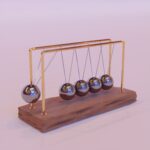Opening
How does nature work? Why do things do what they do and react in the way they do? These questions are rather philosophical. They can be asked in regard to virtually all of aspects of life.
In history – we ask why did certain countries or cultures act in the way they did. In psychology – we ask why did a person act in a certain way. In biology – we ask why a cell moves in a certain way or how a body keeps itself in homeostasis. In chemistry – we ask how certain reactions are formed. But at their purest form, these question are asked in the field of physics.
In physics, these questions aren’t restrictive to a certain set of complicated objects such as countries, people, cells, or molecules. Physics (specifically mechanics) aims to explore the properties of objects simply because they are objects. Therefore when we apply these questions to physics we ask why objects move and change in a certain way.
When you think about it every change is due to some sort of movement. So we will restrict ourselves even more and simply ask – why objects move the way they move? Answering this question will also help us to determine how they move.
What makes an object move?
Suppose you have a ball resting on the floor. At first, the ball doesn’t move. If you hit the ball it will move a little in the direction you hit and gradually stop. From this we can deduce that hitting something makes it move – but that it gradually stops. The ancient greek philosophers thought that the ball stops because it “gets tired”.
Lets make another observation. Suppose you have a heavy object, a car. You hit the car the same way you hit the ball, it doesn’t move at all. You can try to check this with different weights and see that as the object gets heavier it stops earlier. From this we can deduce that it is harder to move heavier objects.
OK, so we know that hitting an object makes it move until it gets tired and stops. Additionally, if the object is heavier it will stop earlier.
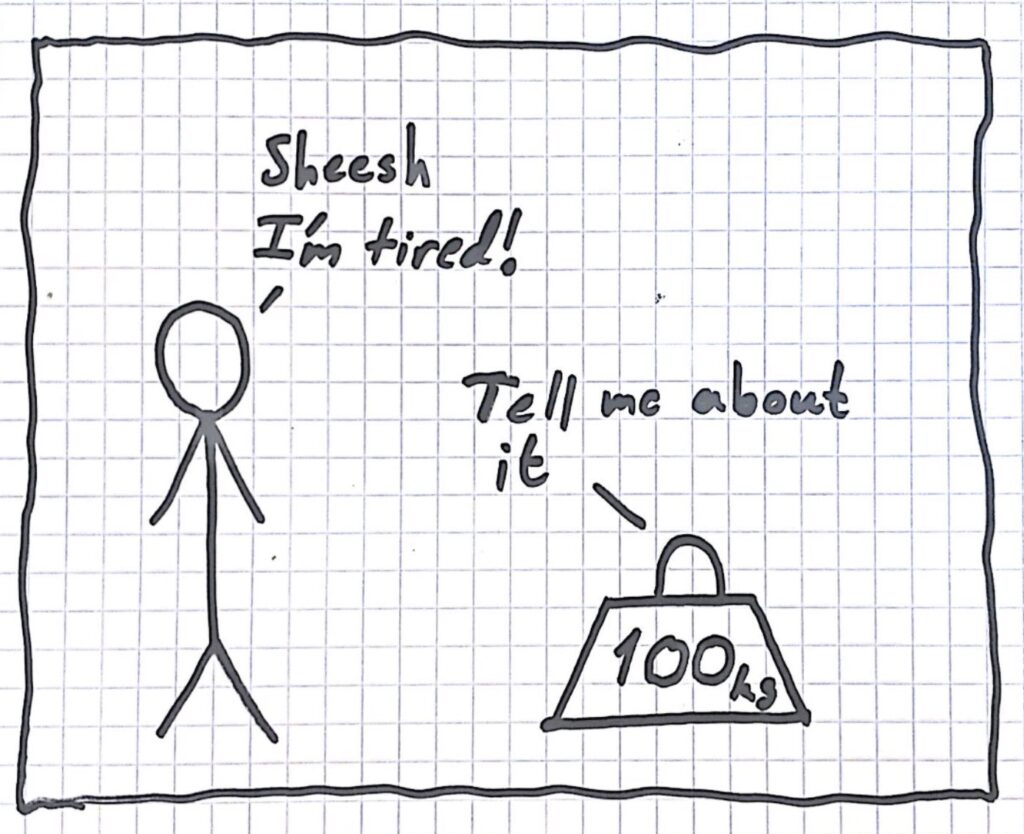
Contradictions from day to day observations
There are a couple of weird things that contradict certain aspects of this theory:
- When objects fall nothing hits them, but they move – and they don’t even appear to get tired. They continue to get faster and faster.
- They rate at which objects get tired depends on the floor. For example, on sand they stop really fast. On concrete the stop also but it takes more time. On ice it takes a really long time for them to stop.
These two contradictions suggest that something is wrong with our current theory.
The first bullet suggests that something is “hitting” the ball by simply putting it above the ground. The second bullet suggests that the floor type affects the “tiredness” of the object.
Formalizing our theory
To make our theory comply with these observations we need to go back to the basics.
We said that when we hit an object it starts to move. Additionally, if we hit an object that is already moving we change its speed. If we hit it in its direction of motion then its speed gets larger, if we hit it in the opposite direction then its speed gets smaller. If we hit the object in the opposite direction very strongly then we can stop it. If we hit it even stronger it will change its direction.
In pure form, a force that we apply on something makes it change its speed. Change of speed is called acceleration – so a force acting on a body makes it accelerate. So for now our theory says:
F\propto a
Where F is the force acting on the body and a is its acceleration. The symbol \propto means “proportional to”.
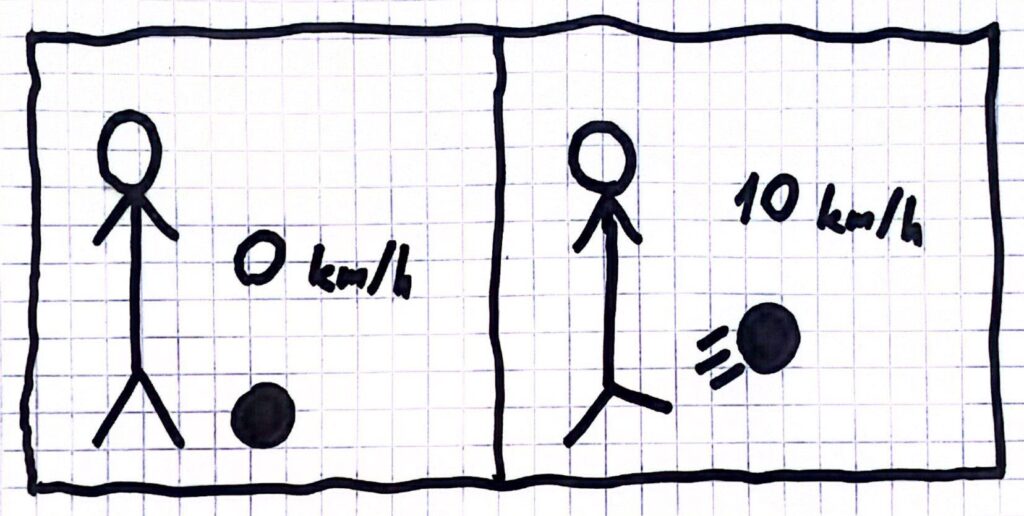
A solution to the observations
One thing we kind of neglected in our theory so far is the floor. Because the object slows down when it touches the floor it suggests that the floor hits the ball (exerts a force on it) in the opposite direction of its movement. Certain floor types exert more force, such as sand, and certain exert less force, such as ice.
The force that the floor exerts on the ball is called friction and it is caused by the roughness of the floor and the ball.
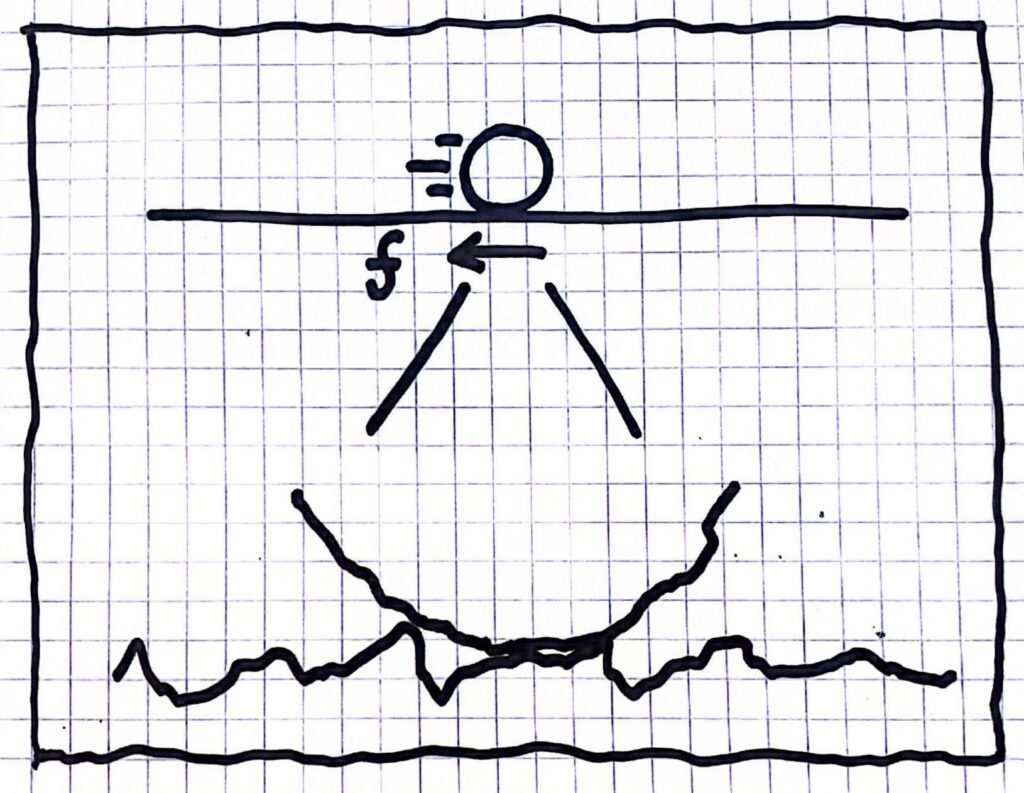
OK, so this solves the second bullet, but what about the first? Why do objects accelerate downward when released above the floor?
We settle this argument by suggesting that the earth exerts a force on all objects. This force is called gravity and it is directed at the center of the earth (downward in most cases).
[Newton expanded on this even further and said that any two objects exert a force of gravity on each other. The force depends on the mass of the two objects. Because, as we saw, it is easier to move objects that are less heavy the ball moves less than the earth when it falls down. There is still a very small distance that the earth moves up because of the gravity of the ball, but that is negligible.]
So we solved the second bullet with friction which has a kind of good explanation. We solved the first with gravity – we don’t really know why gravity exists.
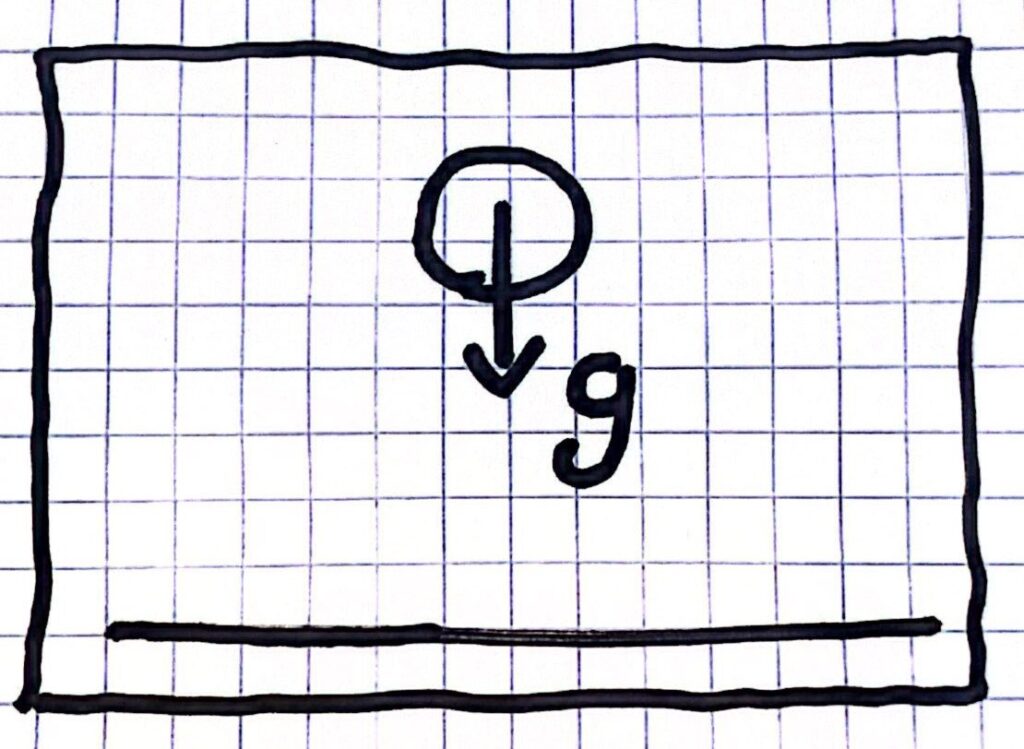
Mass
At the start we saw that heavier objects get tired faster. Formalizing this, when we exert a force on a heavier object it will accelerate less. This “heaviness” of an object is characterized as its mass. Mass is defined as the amount of matter in an object.
An object can have more mass in two ways:
- The object is bigger
- The object is denser
In both cases it is heavier, hence it is harder to make it accelerate. This makes sense because the force we apply will be split to more things. So each thing will experience less force.
Second law
Using this phenomenon and the relation we can deduce the relation:
F\propto ma
Meaning that if the mass m is larger, if we exert the same force F we will have a smaller acceleration a. In a rather dramatic turn of events we say that is is all that matters and deduce the equation:
F=ma
This is called Newton’s second law. Essentially it says that force causes acceleration – meaning that it makes objects move. And that if the object has more mass it is harder to make it move.
The Normal force
One thing we didn’t take into account is the force of gravity and the floor. We said that gravity acts on the ball downward because of the earth. The earth has no idea where the ball is so gravity must act on the ball even when it is on the ground. So when the ball is resting on the ground there is a force acting on it downward. So why doesn’t it accelerate downward?
In other words, why doesn’t the ball accelerate through the floor? This should happen according to our theory.
We can compensate for that by saying that the floor exerts an upward force on the ball when they are touching. This force is called the normal force and it prevents objects to go through each other. When a ball is thrown at a wall it doesn’t go through it but jumps back, this is also due to the normal force that the wall exerted on the ball when they touched.
The normal force prevents the objects to go though each other. Due to that is always perpendicular to the surface that exerts it.
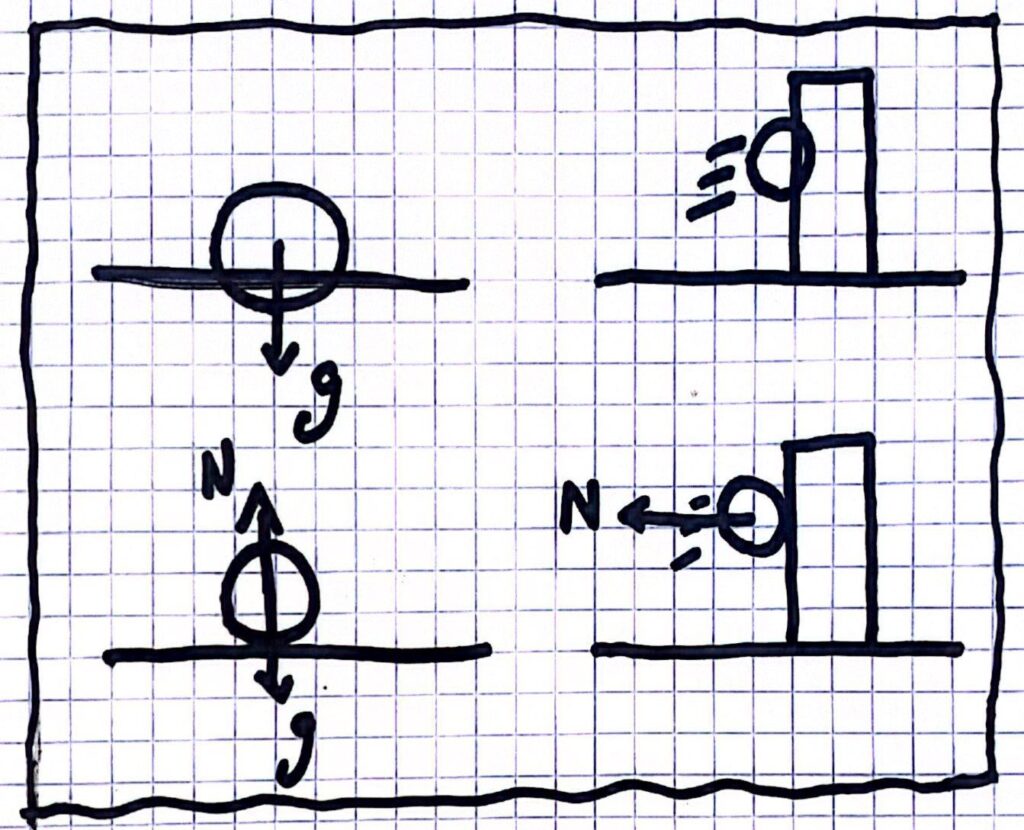
Third law
The third law is a generalization of this and it says that “Every action has an equal and opposite reaction”.
In some cases the third law prevents objects from going through each other. For example, when our foot hit the ball it didn’t go through it, this is because the ball exerted a force on our foot. That force was opposite in direction to our hit and had the same strength. If one of these conditions were false our foot could either go through the ball or be prevented from touching it at all.
In some cases the third law doesn’t prevent objects from going through each other but just makes a very nice symmetry. Such as in the case of gravity.
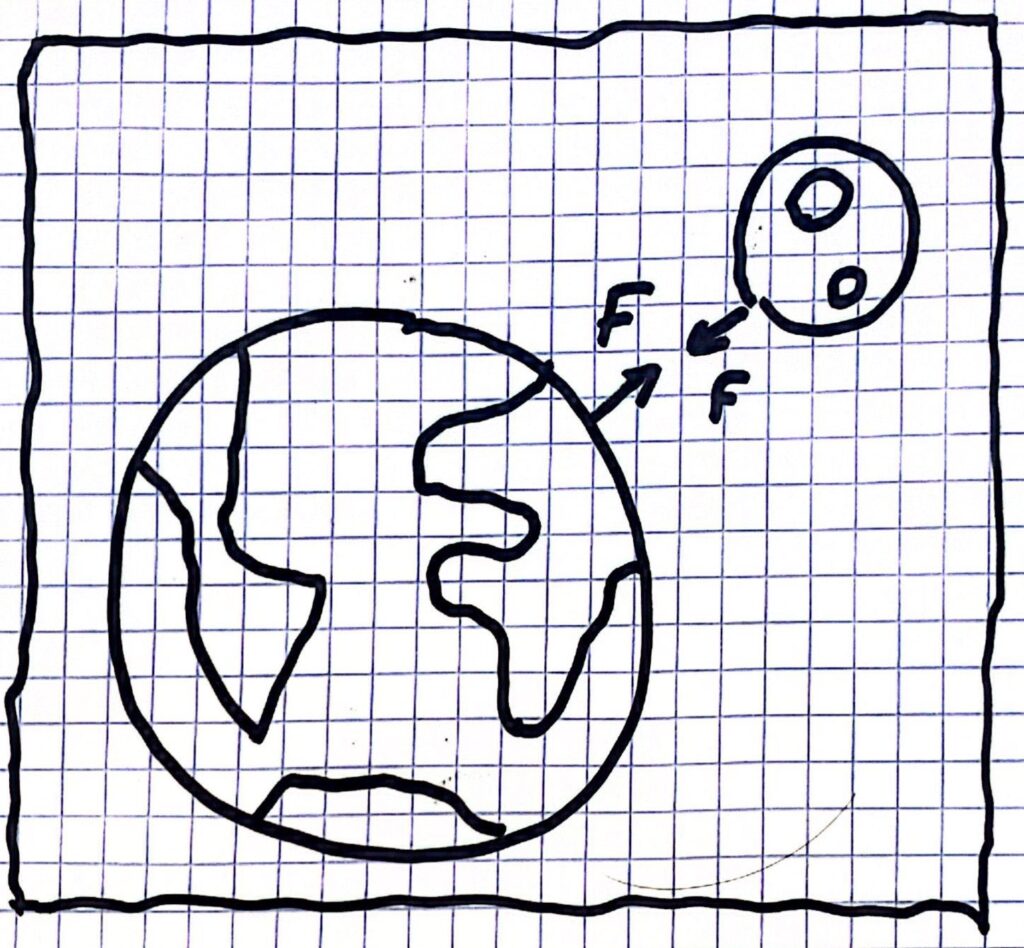
Summary
So to sum up, Newton’s laws are:
- An object will not change its motion if no force is acted on it –
- An object’s change of motion is proportionate to the force acted on it and inversely proportionate to its mass – F=ma
- When two objects interact, they apply forced to each other of equal magnitude an opposite direction
We arrived at these laws by simply analyzing the motion of a ball on the floor. Although relatively simple, these 3 laws represent accurately the motion of most objects in the universe. They are the basis of physics and engineering.
Limitations of Newton’s laws
The laws discovered by Isaac Newton around the 17th century. They were not contradicted until the early 20th century with the advent of relativity and quantum mechanics.
The laws are not standalone. They describe the motion of objects due to forces but to use them in a beneficial way we need to know the value of certain forces. The amount of force each object exerts at what case is very much dependent on the situation. But if we know the forces involved, we can use are knowledge of Newton’s laws to know how the objects will move.
This leads to various philosophical questions. Can we use Newton’s laws to predict the future? If we know the initial state of every particle in a human body can we predict how he will behave? In theory the answer to both questions is yes. But getting the state of all particles (position, speed and acceleration) is really hard. Additionally, when incorporating quantum mechanics randomness gets involved and this becomes impossible, but this is a story for another time.
